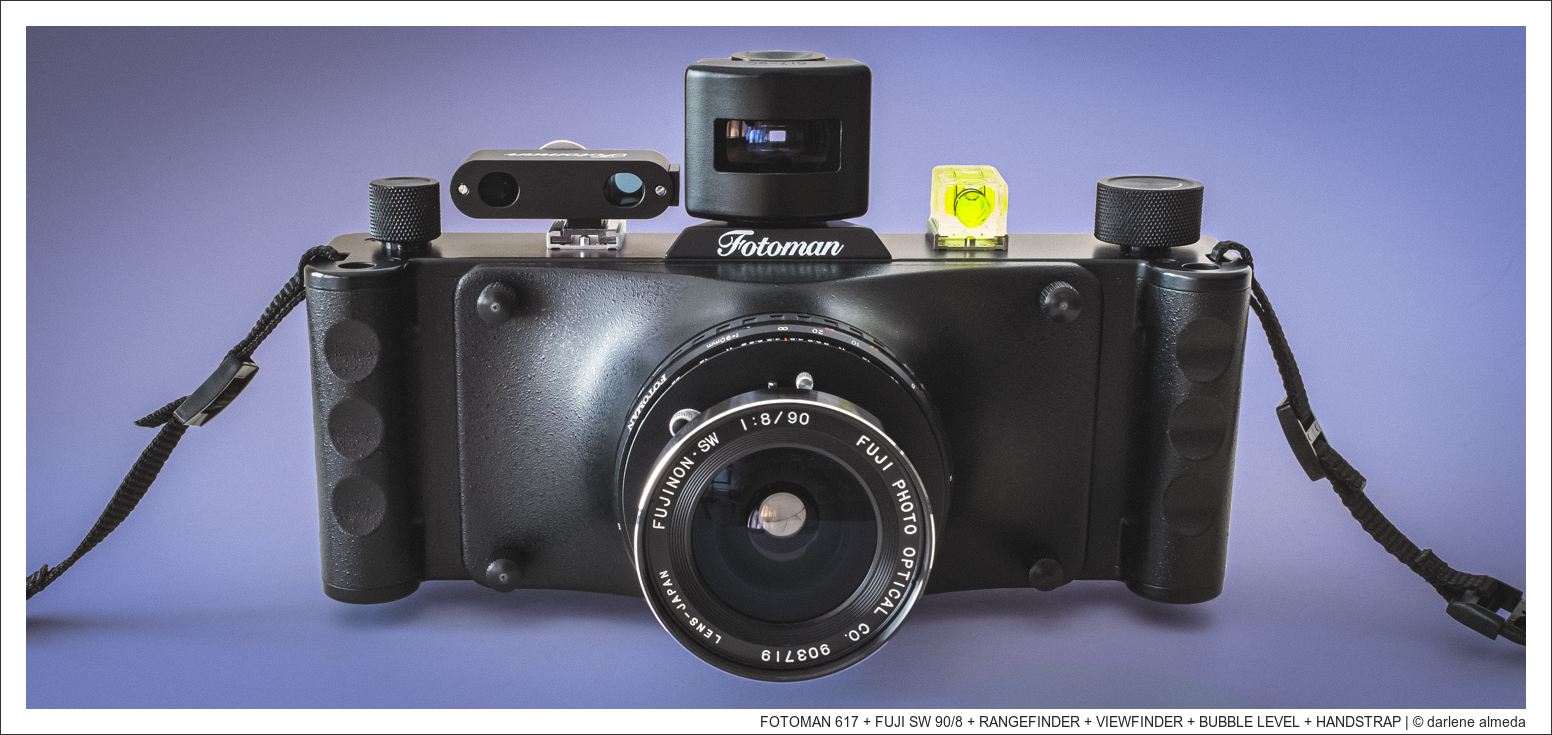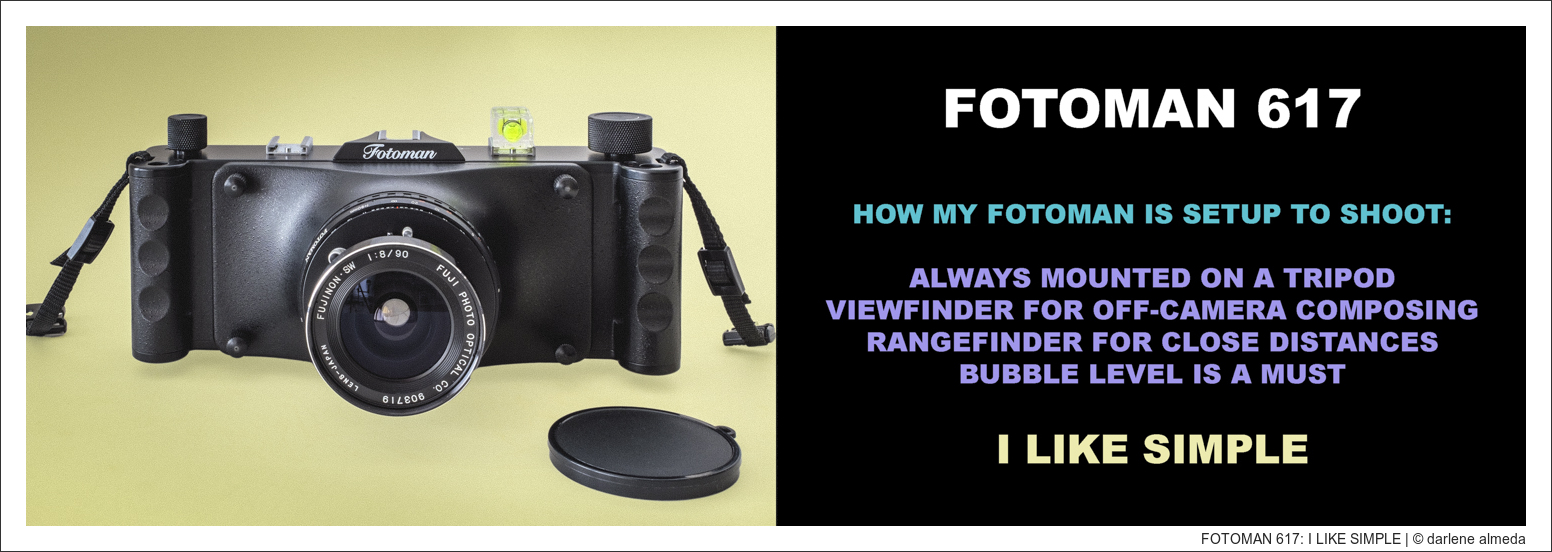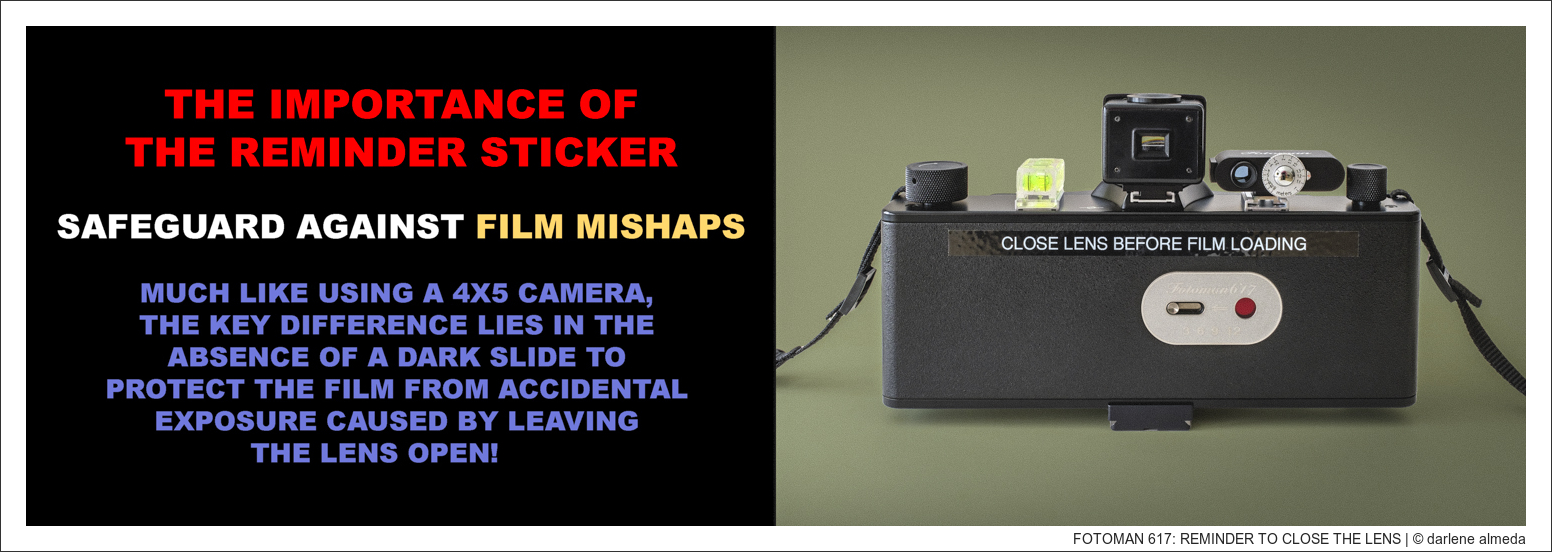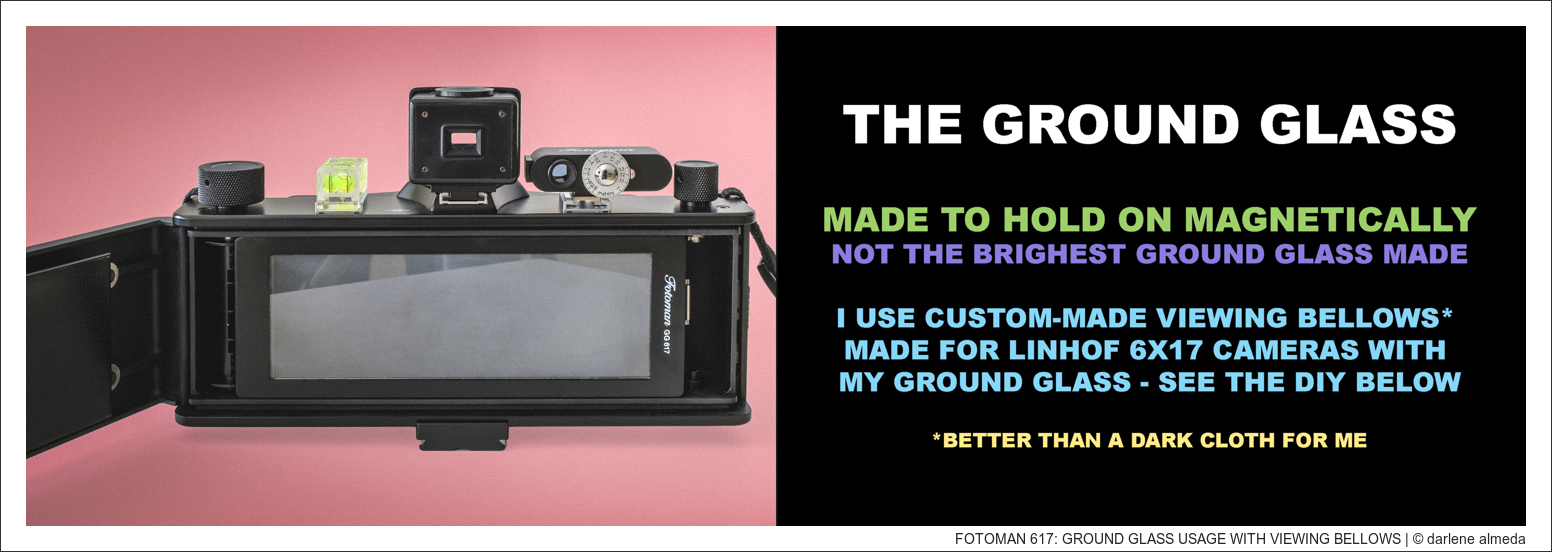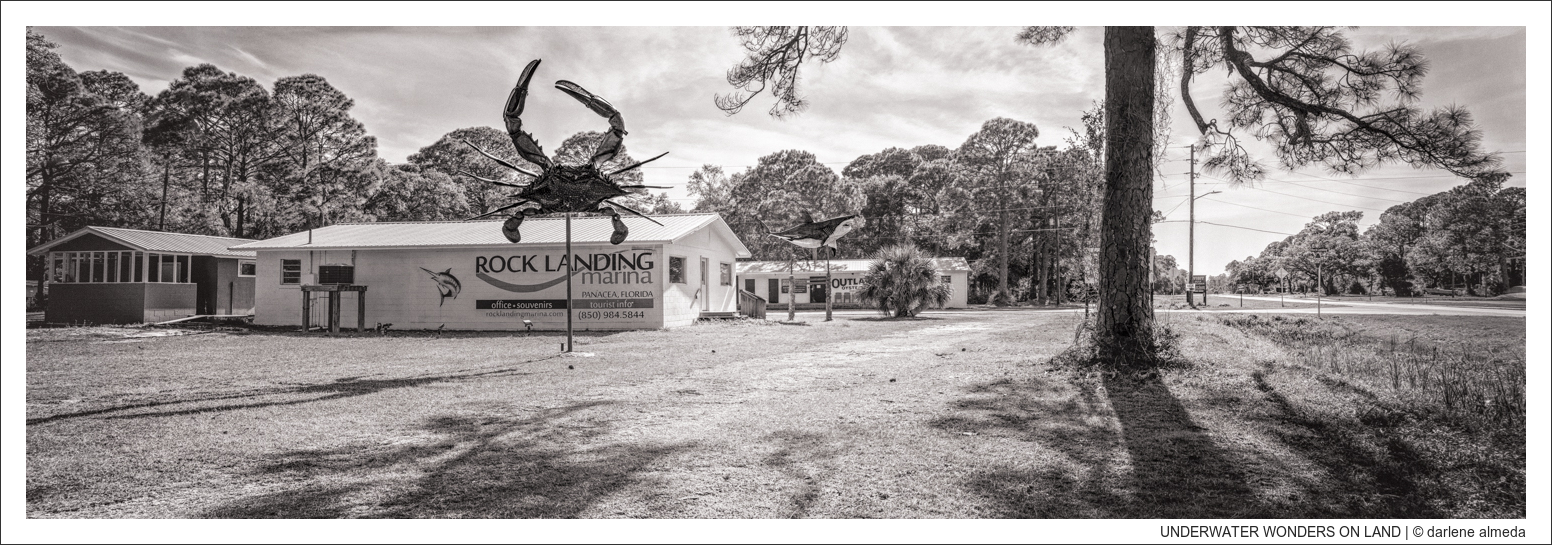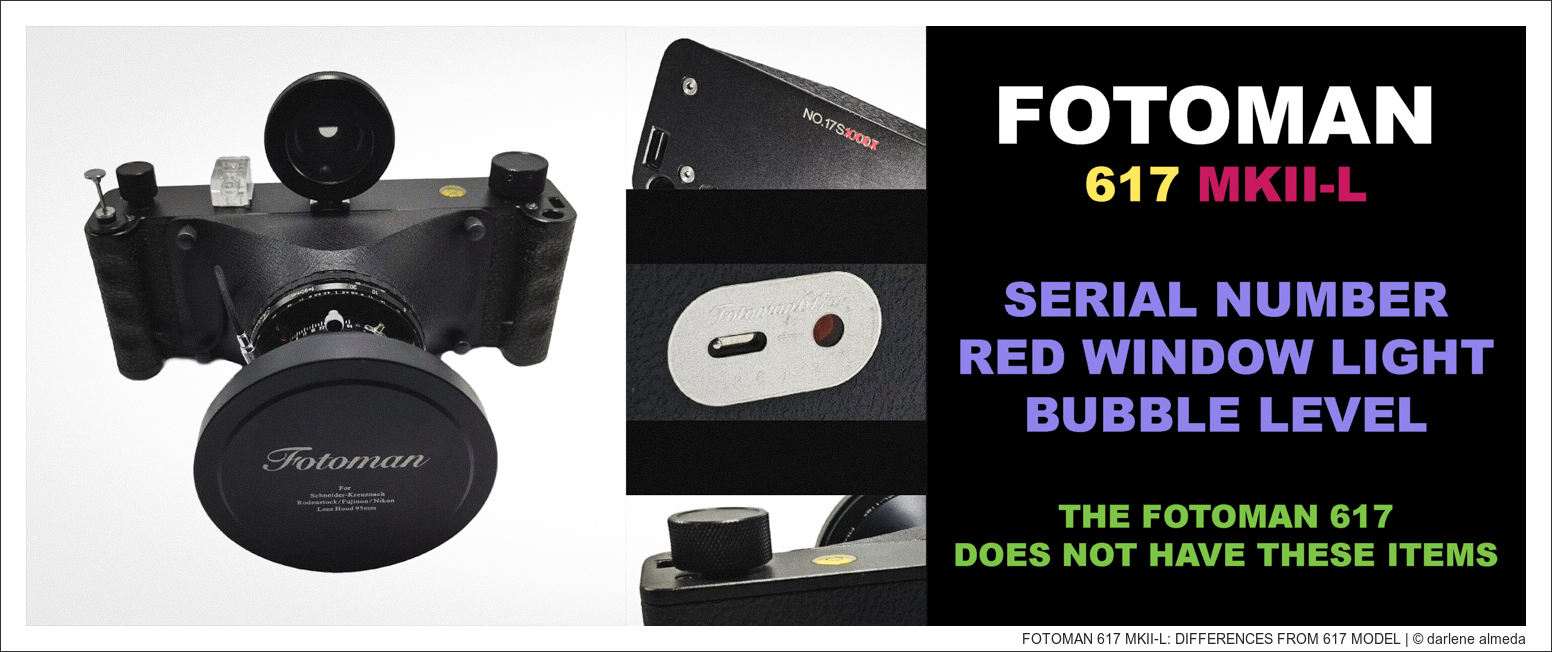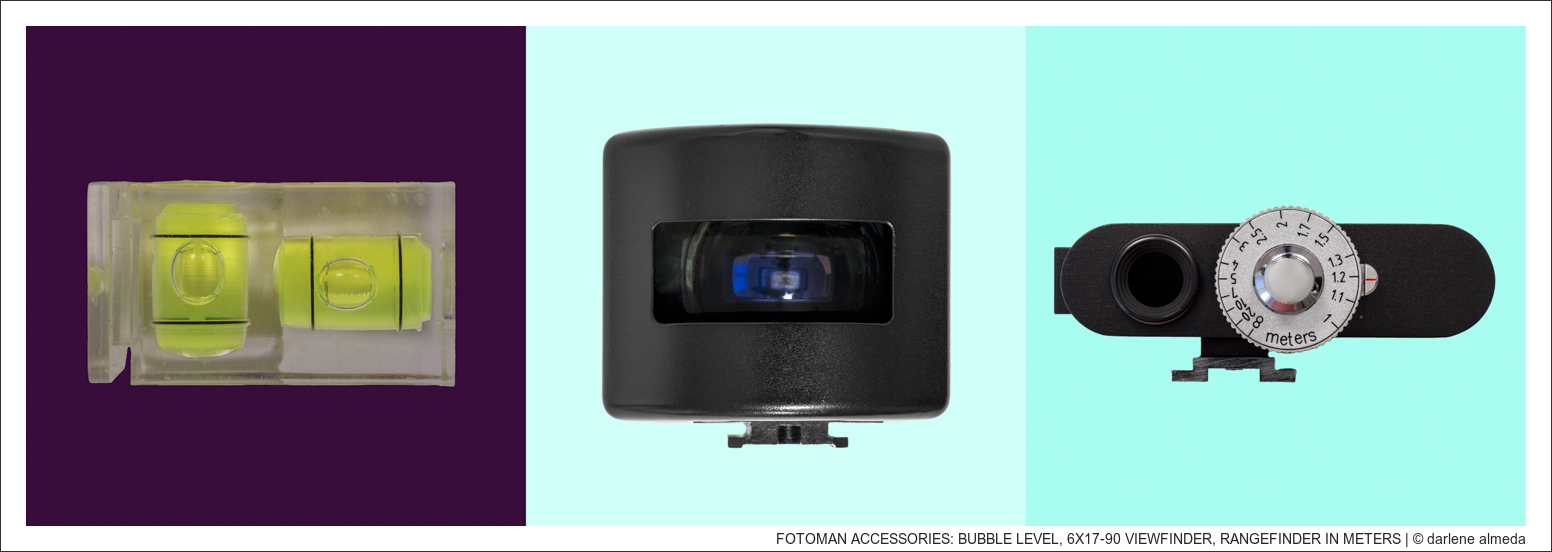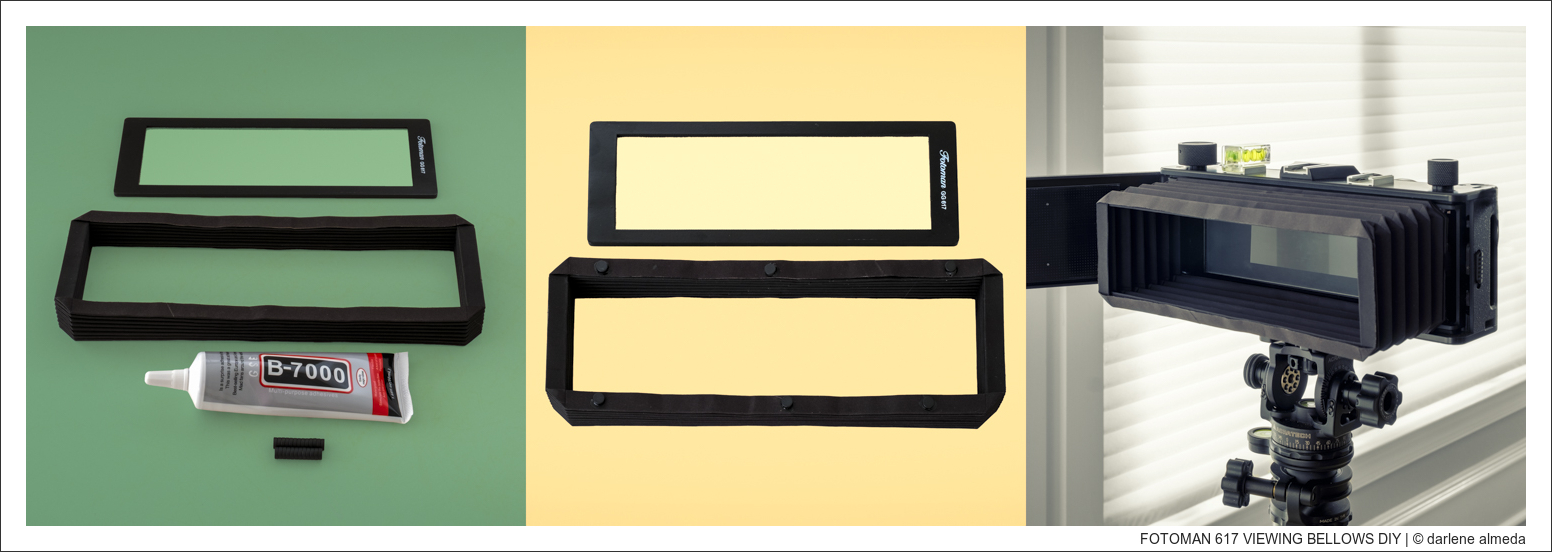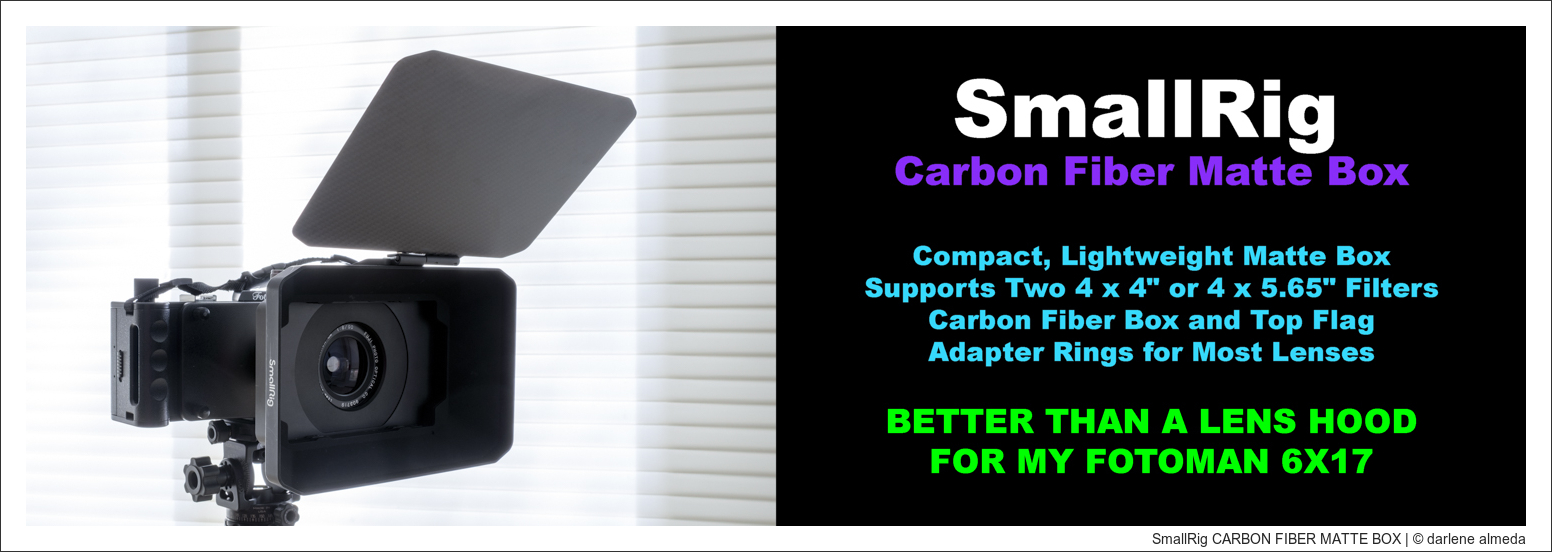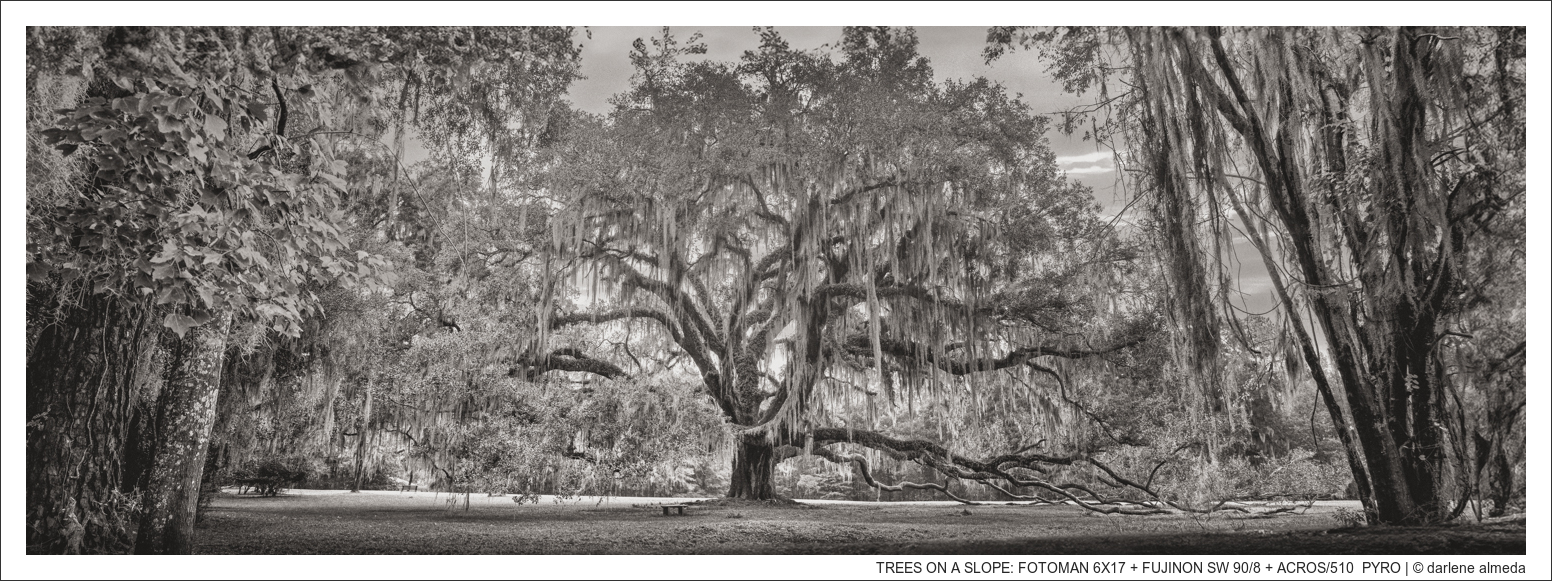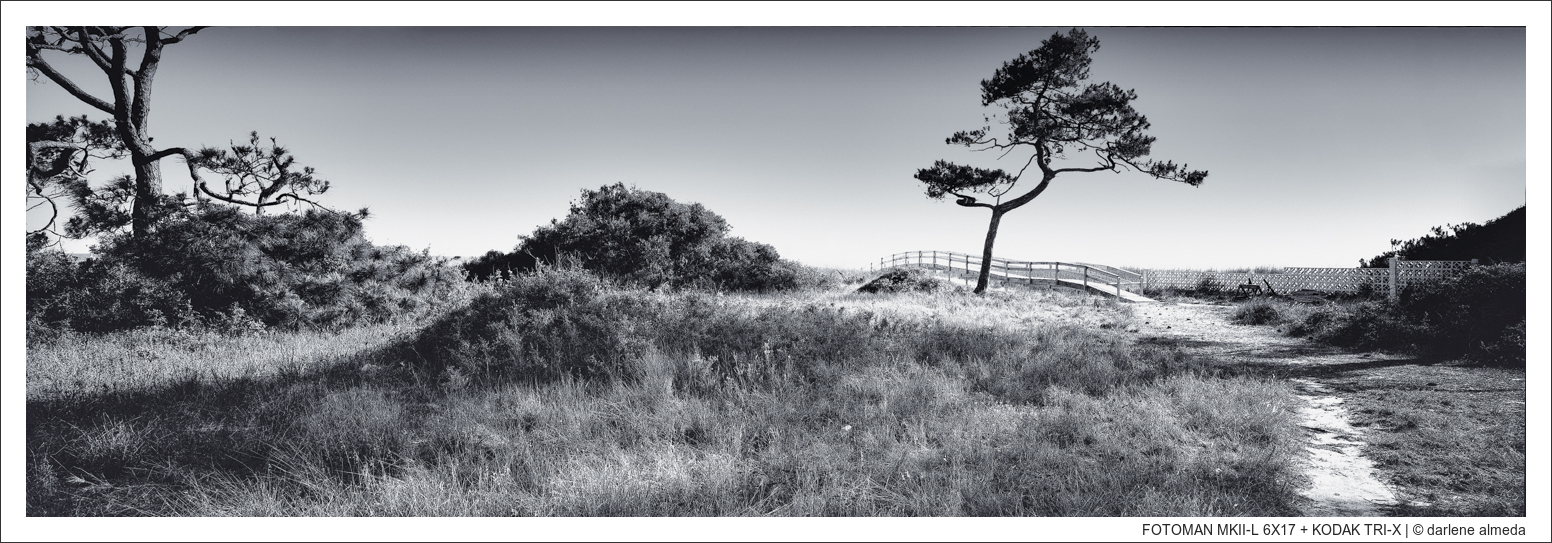The Fotoman 617 operates with simplicity, akin to a 4×5 film camera, empowering photographers to capture extraordinary images limited solely by their creativity and shooting prowess. It holds a special place in my heart as a personal favorite. However, acquiring a Fotoman 617 can be an adventure, given that production ceased many years ago, making it challenging to find one in pristine condition. I’ve been fortunate to own two distinct versions of the Fotoman 617: the classic Fotoman 617, currently in my possession and shown above, and an updated iteration, the Fotoman 617 MKII-L. Both share similar build and design qualities and function identically.
TABLE OF CONTENTS
EQUIPMENT LIST: MY PERSONAL FOTOMAN INVENTORY HISTORY
FOTOMAN LITERATURE
INTRO
MY JOURNEY BACK TO THE FOTOMAN 617
THE IMPORTANCE OF THE REMINDER STICKER
THE GROUND GLASS
IMAGE: UNDERWATER WONDERS ON LAND
FOTOMAN 617 & 617 MKII-L
FOTOMAN 617 & 617 MKII-L SPECS
FUJINON SW 90/8 LENS
FOTOMAN 617 ACCESSORIES
FOTOMAN 617 DIY VIEWING BELLOWS
SmallRig CARBON FIBER MATTE BOX + FOTOMAN 617
SHIMODA FILTER WRAP 100 + FOTOMAN 617
CAMERAS: Fotoman 6×17, 617 MKII-L Panoramic Film Camera
LENSES: Fujinon SW 90/8, Rodenstock 90/6.8 Grandagon & Rodenstock 180/5.6 Sironar
ACCESSORIES: Ground Glass, Rangefinder, Viewfinder, Custom-made Viewing Bellows
OTHER FOTOMAN GEAR: 4×5″ Graflok Viewfinder with built-in Ground Glass, Fresnel & 6×12 Mask
LITERATURE:
Fotoman Panoramic Camera User Manual
MY JOURNEY BACK TO THE FOTOMAN 617
[ FOTOMAN 617: I LIKE SIMPLE ]
[ FOTOMAN 617: REMINDER TO CLOSE THE LENS ]
[ FOTOMAN 617: GROUND GLASS USAGE WITH VIEWING BELLOWS ]
In a remarkable twist of fate, I chanced upon a pre-owned Fotoman 617 camera paired with a Fujinon SW 90/8 lens, offered for sale by a reputable dealer in the USA. To my sheer delight, the camera and lens were in excellent condition and allowed a tryout period. Below is an image made with the camera. Following is everything I know and feel about the Fotoman 617 that I currently enjoy shooting. Be sure to check out my DIY viewing bellows if you are like me and do not like shooting under a dark cloth outside of the studio.
[ FOTOMAN 6×17 + FUJINON SW 90/8 + ACROS II/510 PYRO ]
FOTOMAN 617 & 617 MKII-L
[ FOTOMAN 617 MKII-L: DIFFERENCES FROM 617 MODEL ]
My current camera has the Fotoman logo above the lens, while the model pictured above does not. I have also seen models with logos above the lens that says ‘Fotoman Professional,’ but I cannot remember if my previous model had that. If anyone reading this knows the differences between models I have not listed, please reach out to me so I can record them. TIA.
FOTOMAN 617 & 617 MKII-L SPECS
| Image Size: | 56mm x 168mm |
| Film Size: | 120 |
| Focusing: | Helical Focus Mount or optional GG-617 Ground Glass |
| Viewfinder: | 120° with Interchangeable Masks |
| Body Material: | 6061 T Aluminum Alloy |
| Body Dimensions: | 203mm x 111mm x 62mm |
| Weight: | 1.56 kg (3.44 lbs.) Not Including Lens |
For those photographers more familiar with digital photography, operating the Fotoman 617 is akin to using a 4×5 camera. It does not have a built-in light meter or through-the-lens (TTL) viewfinder. You can utilize the Fotoman Helical Focusing Mount to achieve precise focus or opt to focus via ground glass if available.
A notable feature of the camera is its lack of a film frame stoppage mechanism. Instead, it relies on a dark red transparent window to display the numbers on the film-backing paper. Because it can be challenging to see the numbers clearly, I often use my iPhone’s flashlight to briefly shine light on the red window to see the numbers. The red window setup renders the camera unsuitable for 220 film due to the absence of backing paper beyond the starting and ending points.
This raises the question: “Can the ground glass be used after loading the film?”It’s feasible to rewind the 120 film, leaving it wound in the camera, affix the ground glass for precise focusing at a different location, reload the film on the take-up spool, and seamlessly resume shooting from the desired frame number. I recommend practicing this technique with a spare roll of film multiple times before garnering it into your shooting workflow.
The camera body is one of the most straightforward film cameras to load—the turning of the film advance/rewind knobs is very smooth, but before you insert the film into the camera, it’s important to remember to shut the lens shutter and, if necessary, consider placing the lens cap on. This is a distinction between the Fotoman and a 4×5 camera. In the past, I inadvertently ruined a few initial frames by leaving the lens shutter open while focusing and did not close it before film loading. Unlike a 4×5 camera, there is no dark slide to shield the film before you configure the lens. To address this issue, I devised a solution: I printed a label reading “CLOSE LENS BEFORE FILM LOADING” and attached it to the back of the camera. This straightforward remedy has proven effective for me!
Since the company ceased operations many years ago, obtaining a lens made specifically for this camera mount is no longer an option. I am unaware of any individuals or entities currently offering such a service. Consequently, we must turn to the secondary market for anything related to the Fotoman 617. Watch on platforms like eBay and photography dealers specializing in used film equipment. You may come across a valuable find with sufficient patience and persistence.
[ FUJINON SW 90/8: “B” SETTING, LENS OPEN ON “B” WITHOUT CABLE, LENS SETTINGS ]
FUJINON SW 90/8 LENS
The Fotoman camera I currently use has a Fujinon SW 90/8 lens in a Seiko shutter. This is the first large-format lens I have that uses a Seiko shutter. The little Bronica ETRS I took in for a barter decades ago had a Seiko shutter, but it did not operate like a large-format lens.
The lens design and glass are well-tuned for sharpness. This is a single-coated lens; from the data I could find, it was made before 1979 due to its labeling on the front inner ring.
The Seiko shutter has no “T” setting, and its fastest speed is 1/500.
I had to learn how the “B” setting operates to keep the aperture open for focusing without using a locking cable. Fuji placed a tiny lever close to the “B” setting, so I figured there was a way.
After fiddling around, I got it to work, but I saw the need to do more research as I could not replicate exactly how I made it open and stay open.
What you need to do is cock the shutter, close the shutter but keep the shutter button in while pushing the lever next to “B” to the right if you are looking at the lens from the front. Close the “B” lever when you are finished focusing.
[ FOTOMAN ACCESSORIES: BUBBLE LEVEL, 6X17-90 VIEWFINDER, RANGEFINDER IN METERS ]
FOTOMAN 617 ACCESSORIES
The title above may be misleading, as most of the accessories I use with my Fotoman 617 are not manufactured by Fotoman but by other companies.
The top banner photo of the fully accessorized 617 on this page showcases its complete ensemble, which includes a viewfinder, a rangefinder, a bubble level, and a hand strap. While Fotoman produced the viewfinder (image #2 above) and the rangefinder (image #3 above) specifically for this camera, the other components are from different manufacturers.
I rarely use the rangefinder when taking photos with my 617 camera. While it could benefit close-up shots, my main focus is on landscape photography. For this purpose, I rely on the ground glass and hyperfocal distance focusing techniques, consistently producing sharp images. I’ve kept the rangefinder in my gear collection for sentimental reasons—I purchased it alongside my first Fotoman 617 camera. For convenience, I prefer my photography measuring devices to be set in meters rather than imperial settings. I find them easier to remember and use.
I use the camera’s removable viewfinder to compose shots away from the camera, while I rely on the ground glass for my initial focusing when setting up the shot. Each composition is assigned one roll of 120 film, resulting in four frames in total. I typically employ contrast filters with black-and-white film, ensuring I utilize all the frames on the 120 film roll. You can see my recommended filter carrier/wallet towards the end of the page.
When using filters, I need to shade them from light just as much as I do the lens. I tried various filter holders and lens shades on hand, but none worked for what I was looking for, which was a lightweight and quick setup that did precisely what I needed it to do: shade light without vignetting. I decided to approach the problem from a different angle, and you can see my solution below using the SmallRig Matte Box.
Lastly, I invested in custom-made viewing bellows designed for Linhof Technorama 6×17 cameras that I modified, allowing them to attach to the ground glass easily. This straightforward do-it-yourself project is detailed next.
[ FOTOMAN 617 DIY VIEWING BELLOWS ]
FOTOMAN 617 DIY VIEWING BELLOWS
However, there’s a challenge with the ground glass due to the wide-angle perspective I use for this format. The corners and about the last quarters of each side of the ground glass become too dark to see without the use of a dark cloth. So, I decided to find a solution.
My preference has always been to use a focusing or viewing bellows, but Fotoman never produced one, and I couldn’t find any other manufacturers offering such a product. Nevertheless, I didn’t let that deter me from creating one myself.
My first step was to locate someone who made 6×17 bellows that could be adapted for the Fotoman 617. After some searching, I discovered a seller on eBay (fouruo4sk) who sold Linhof 6×17 focusing bellows. I purchased one, and despite the long wait of about six weeks for it to arrive from the other side of the world, I was willing to be patient. The total cost, including shipping, came to $106.29. While not exactly inexpensive, it was a reasonable price considering the circumstances.
As you can observe in image #1 above, the bellows are slightly larger than the ground glass frame, but they fit the camera comfortably, a positive aspect of their usage here.
The next challenge was finding appropriately sized magnets and a suitable adhesive to attach them to the bellows material. After researching, I came across 1/4″ x 1/16″ Very Tiny Round Craft Magnets that fit perfectly within the small area of the bellows, leaving sufficient space to prevent excess glue from spilling over the edges.
For the adhesive, I opted for B7000 Jewelry Glue, which is well-suited for fabrics and ceramics and features a needle cap design. This applying needle was essential because the magnets were quite small, and precision gluing was necessary.
The DIY process was straightforward: ensure the magnets are affixed in the areas where they will make contact with the ground glass frame since the bellows are larger (image #2) than the frame.
Once glued, the adhesive needs to cure for 24-36 hours. Afterward, the bellows mount easily and stays securely on the ground glass frame! (image #3)
Here’s how I use the bellows with the camera: I begin by placing the ground glass in position and affix the bellows for shooting. When it’s time to remove them, I grasp the bellows, and the ground glass remains securely attached. This allows me to hold the ground glass in my hand and effortlessly slide the bellows off the frame.
If you’re a fan of your Fotoman 617 and have longed for a viewing bellows, you’ll discover this DIY project as an uncomplicated and efficient method for crafting your solution!
###
[ FOTOMAN 617 + SmallRig CARBON FIBER MATTE BOX ]
SmallRig CARBON FIBER MATTE BOX + FOTOMAN 617
I’ve gone through various lens hoods in my photography journey. One thing that has always bothered me is using filters on the exterior of hoods, where they can be exposed to direct sunlight, causing unwanted halos, contrast problems, and other optical anomalies. I often found myself wondering why some photographers choose to do this.
Initially, I was eager to use a Sinar hood with an integrated 100 mm filter holder with my Fotoman 617. Unfortunately, it resulted in vignetting issues with my Fuji SW 90/8 lens, and I want to stay with the Fuji SW 90/8 lens. Next, I experimented with an older LEE filter holder similar to the Sinar but without the hood component. I attempted to use an older Ebony flag device (dark slide holder), which fits into the camera’s cold shoe and shades the lens and filters. However, it proved less than ideal, requiring a cumbersome setup and stow process. Frustrated, I decided to approach the problem from a different angle.
The root of the issue was the combination of the lens hood and filter setup I was trying to perfect. I wanted to use something other than a compendium hood contraption like the one I had custom-made for my Ebony 4×5 camera. It is awkward, takes up too much space in my bag, and is generally inconvenient to set up. Since the Fotoman itself is already bulky, I began exploring options from the world of cinematography.
That’s when I stumbled upon a used SmallRig carbon fiber matte box at B&H Photo. While it initially looked unconventional, it accommodated my filters, had the flag I was looking for, and effectively shaded the filter area. The matte box came with a single lens adapter ring, the 67 mm size that my lens required. The description claimed it was lightweight, and B&H offered a hassle-free return policy. With free shipping and a discounted price, I decided to take the plunge.
I’m delighted I did because this matte box perfectly fits the Fotoman 617 camera. It eliminates the issues of stray light hitting my filters and lives up to its promise of being lightweight and constructed from carbon fiber. Additionally, I purchased a handy screw-in level made by Wooden Camera that screws into the top of the matte box and allows me to quickly ensure my hood and filter setup is perfectly level from behind the camera.
Overall, I’m thoroughly enjoying this matte box. It’s a breeze to set up, fits seamlessly in my bag, and, most importantly, creates zero vignetting issues. More about my experience with this matte box is here.
###
[ SHIMODA FILTER WRAP 100 + LEE B&W CONTRAST FILTERS ]
SHIMODA FILTER WRAP 100 + FOTOMAN 617
I depend on the Shimoda Filter Wrap 100 to shield my 4×4 (100 mm) filters when I venture out into the landscape with my Fotoman 617 for film photography. This filter wrap proves to be an excellent solution for safeguarding my delicate LEE gel filters during my travels. It’s tailor-made for on-the-go use and easily attaches to my tripod. Its compact, weather-resistant, lightweight design provides superb protection for my filters. Moreover, it simplifies the task of distinguishing between different filters, and I find the zippered pocket at the base handy for stashing my lens cap while shooting.
In fact, I have two of these wraps—one for my black and white contrast filters, as shown above, and another for my neutral density (ND) filters. I highly recommend these wraps. If you happen to use filters larger than 4×4 (100 mm), they also offer a Shimoda Wrap 150 for filters up to 150 mm x 100 mm, which may better suit your needs.
###
